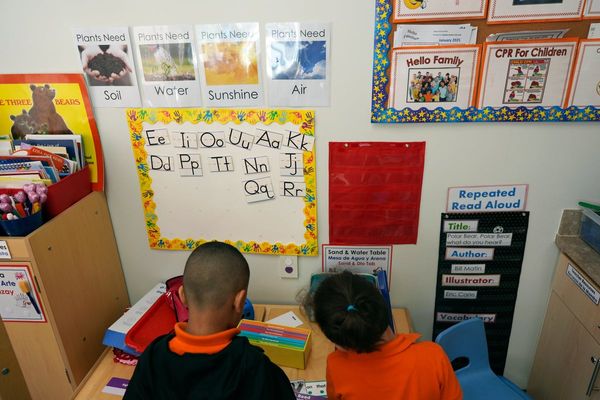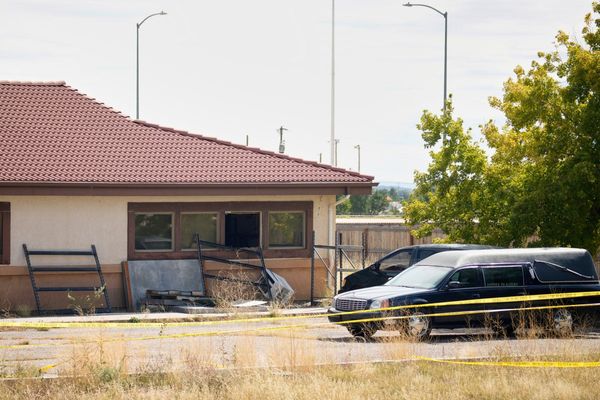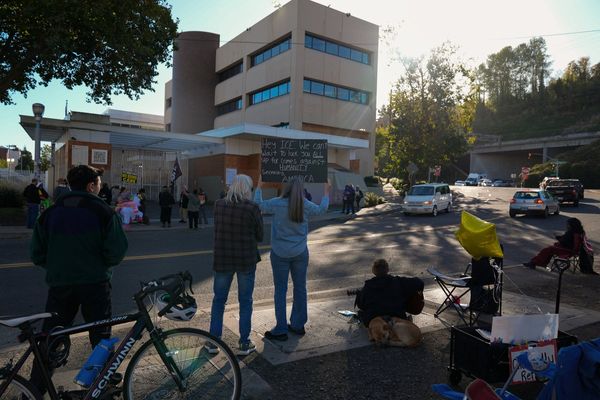
A determined political movement to end the war on drugs has taken shape across Europe and North America. Harm reduction advocates say lives can be saved and resources spared, if only the state would move away from punishing drug users. Perhaps, some predict, the state could even get into the business of regulating the production and sale of once-illegal substances.
Just last month, voters in Oregon and politicians in Vancouver, British Columbia, approved plans to decriminalize all illicit drugs, paving the way for a health care approach. They’re following the example of Portugal, which decriminalized drugs in 2001 and has seen overall success. More than a dozen U.S. states have legalized the recreational use of cannabis, as well as Canada, South Africa, Uruguay, and a smattering of other countries and jurisdictions.
Yet proponents of decriminalizing, or even legalizing, drugs have focused mostly on the world’s biggest drug importers and often overlooked the countries responsible for producing and trafficking the drugs to satisfy rich countries’ demand.
States such as Mexico.
When Mexican President Andrés Manuel López Obrador, known as AMLO, won the presidency in 2018, he did so on a sensible, cautious promise to put an end to the costly drug war—an appealing offer to voters tired of the violence that had killed around 150,000 people in 12 years. He vowed that he would deprive the criminal gangs of money and recruits with a social justice approach. His slogan was “Hugs, not bullets.”
As president, he laid out a five-year plan with a call for a “new paradigm” in justice. It was a recognition that neither the police nor the military could snuff out demand for drugs in Mexico itself, let alone in client markets such as the United States—and, as long as there was demand, supply would follow. Drug reform advocates hailed AMLO as a leader.
And yet, two years on, the plan seems like a failure. Violence is up. The gangs haven’t been displaced. Other countries have warned against nonessential travel to various Mexican states. Nebulous plans to forge ahead with controlling the cultivation and production of opium poppies appear to have dissipated.
Mexico is only now on the brink of legalizing cannabis. The jury is out as to whether that plan will make a dent in the cartels’ riches.
Yet advocates of drug reform are urging patience, warning that nothing about ending Mexico’s drug war will be easy.

For decades, Mexico’s booming illegal cannabis industry has existed largely to supply demand in the U.S. market. U.S. Border Patrol seized 858,000 pounds of marijuana at the Mexican border in the 2017 fiscal year alone, representing just a fraction of the drug entering the country.
Pot has long been a cash crop for the cartels. Confirming exact numbers may be sketchy, but a 2007 U.S. government report estimated that cannabis trafficking from Mexico into the United States earned them somewhere in the ballpark of $10 billion—more than cocaine, heroin, and methamphetamine combined. That huge number was driven by increasing demand and efforts to eradicate domestic U.S. production.
From Richard Nixon’s presidency onwards, the White House has tried desperately and futilely to stem that flow. Nixon launched Operation Intercept, deploying thousands of border guards to stop and search virtually everything and anyone crossing from Mexico, hoping to push the Mexican government to get tougher on the drug trade by choking trade and travel. It didn’t work. In the 1980s, then President Ronald Reagan dispatched the Drug Enforcement Administration (DEA) south of the border—then launched Operation Intercept II, which was roughly the same as the first operation, after the cartels killed one of his agents. That didn’t work either. The United States kept up clandestine operations in Mexico until 1998, when a massive undercover money laundering bust smeared egg on the government’s face, leading to new rules on how the DEA can operate in Mexico.
Washington has tried economic blackmail, it has tried cooperation, and it has tried to just do things by itself. Nothing it has tried has worked.
But as the United States ramped up enforcement on the border, Mexico relaxed its own laws—just as growing portions of the United States were.
Mexico decriminalized small amounts of marijuana for personal use in 2009. Since then, though, legal challenges have wound their way through the courts, arguing that the laws banning the cultivation and sale of recreational marijuana were illegal. The Supreme Court agreed, finding the law infringed Mexicans’ rights to consume cannabis. After five rulings from the court declaring the law invalid, in October 2018, just before López Obrador took office, the top court ordered the government to rewrite the laws.
A litany of competing plans were introduced in the legislature to move forward on legalization. But a growing consensus emerged that a legalization plan had to be realistic about what victories it can actually achieve.
“We think, of course, that there will be a decrease in the revenue of the drug cartels,” Laura Rojas Hernández, a congresswoman for the opposition National Action Party, said in a phone interview. “My personal view is that it will not be a great impact.”
She stressed: “This is a discussion about rights—it is not a discussion about violence.”

Parts of the legalization regime, which legislators hope to pass into law in December, borrows from the lessons learned by other jurisdictions—citizens, for example, will have the freedom to grow a small quantity of their own plants, but penalties will be strict for those who try and compete with the new legal regime. There are uniquely Mexican elements to the new regime, however, with some 40 percent of the market reserved for Indigenous, low-income, and marginalized communities.
“I don’t think we have to look to Canada or the United States,” said Zara Snapp, co-founder of Instituto RIA, a research group focusing on justice and drug policy.
Snapp has lobbied to ensure that the new regime is one that engages those who are currently turning a profit for the drug cartels, such as users, people who engage in narcomenudeo (small-scale trafficking), and campesinos (farmers). There’s a reason why cannabis is a favorite cash crop worldwide: It grows plentifully in nearly any climate, it costs little to produce and harvest, and its demand seems to be eternally consistent.
Snapp said that the way legalization is done will determine how effective the strategy is at affecting the illicit market.
“If we successfully regulate cannabis with a social justice focus and are able to excarcerate people who are in jail for cannabis charges, and if the campesinos are involved, that will already be a big step in the right direction,” Snapp said.
If the state can convince those currently participating in illegal cultivation to join the legal system—through competitive prices, amnesty for past nonviolent crimes, and a reconciliation over past wrongs committed by the state in the name of the drug war—it may create the conditions to slowly loosen the cartels’ grip on the drug market. Done wrong, Snapp warned, it may only entrench Mexico’s status as a drug supplier for its richer neighbor.
“We want to be really careful that this isn’t another industry where Mexico is used for cheap labor,” Snapp said.
The backdrop of this debate is one that both Rojas Hernández and Snapp recognize: Legalizing marijuana in Mexico won’t stop the flow of the drug through Mexico.
The simple reality of Mexico’s drug trade is that it exists to satisfy U.S. markets. Its population is less than half—and its gross domestic product per capita is about one-third—of its northern neighbor’s. So long as there is U.S. demand for marijuana, Mexico’s producers will find profit in supplying it. If states continue legalizing, the traffickers’ profit margins may continue falling.
But so long as there are enough U.S. clients, it’s worth it for the traffickers to continue growing in Mexico.
“The drug cartels are strong enough to keep their prices below [the legal rate],” said Rojas Hernández.

In Guerrero, a mountainous state in Mexico’s south, poppy cultivation is a necessity for many. The agrarian state is one of the country’s poorest, with an average income of less than $6,000 per year and consistently has one of the highest murder rates of any state. When business is good, the gum extracted from the poppies—which is used to make heroin—could fetch nearly $600 a pound, offering a quick route out of poverty, before the price crash caused by the arrival of fentanyl.
Growing demand in the United States meant growing supply in Mexico. Poppy cultivation hit an apex in 2017, with estimates putting the total scope of the Mexican poppy fields at 109,000 acres—170 square miles. The cultivation of those poppies alone was worth roughly $1 billion in 2017, before the fentanyl crash, for Guerrero and the surrounding areas, which include some of Mexico’s poorest communities.
In 2016, the governor of Guerrero, Héctor Astudillo, began marketing the idea that the state could convert some of those fields into legal enterprises. Since the opium gum from the plants can be processed into legal pharmaceuticals, Astudillo proposed that Mexico regulate the fields for medical purposes. The profit may be lower, but it would mean farmers not having to worry about the army razing their fields.
It would take some years, but Astudillo convinced the state legislature to pass a bill calling for the decriminalization of opium poppies for medical purposes in 2018, after which the bill was sent off to the federal Senate for approval.
Support for the idea came from an unlikely source: Mexico’s defense minister. “It is a subject that will have to be debated. In principle, it seems to me that it is correct,” Gen. Salvador Cienfuegos told reporters during a trip to Guerrero that year.
The bill is reportedly under study, but hasn’t progressed in the Senate.
But the idea has popped up again in debate around the government’s marijuana legalization effort. Manuel Añorve Baños, a senator for Guerrero, proposed legislation in this session which would legalize and regulate the cultivation and production of poppies.
Despite growing support, López Obrador is still weighing his options.
The biggest driver for change may be market forces. In 2018, prices for opium gum fell off a cliff, partly because of a decline in use but mostly because of price competition. A pound of gum now sells for about $100 per pound. Production has declined substantially as well.
As is common in the drug trade, the gangs weren’t keen to see a reduction in profit, which meant the losses were passed on to farmers. Prices for opium gum declined by as much as 90 percent in a short period.
The decline in heroin’s popularity in the United States appears to be explained by a stark increase in the use of extremely potent and cheap fentanyl. Some of that appears to be trafficked by the cartels, but not exclusively: Huge amounts of the drug are shipped in from China, often via Canada and the United States.
Looking to diversify their output to compete, drug cartels have ramped up methamphetamine production, which is cheaper and easier to produce than ever, and its potency appears to be skyrocketing. In parts of the United States, meth use is skyrocketing.
All of this has created a domino effect for Mexico, which has historically not seen high levels of drug use. Recently, the overflowing supply of meth has created a domestic addiction problem. A lack of a market for heroin has forced cartels to offload that drug closer to home as well. The COVID-19 pandemic’s impact on travel and supply chains has only multiplied that effect.
And then there are the deportations.
U.S. President Donald Trump’s administration’s efforts to send undocumented immigrants back to Mexico has deported those struggling with addiction as well. It is estimated that about 40 percent of intravenous drug users in the Mexican city of Tijuana, which borders San Diego, were deported from the United States. Clampdowns on drug smuggling into the United States has also led to more heroin being sold domestically. Accessible addiction clinics are in short supply, and harm reduction policies proven successful elsewhere are not common in Mexico.

“The intersection of a fragile emerging social structure as a result of nationals returning through deportation from the United States; structural challenges in the treatment of pain; lobbying from pharmaceutical companies; increasing local production, distribution, and availability of heroin; and a lack of infrastructure to support evidence-based treatment of opioid use disorder are likely to increase the risk of a generalized Mexican opioid use epidemic,” read a paper published in the American Journal of Public Health in January 2019.
The United States’ changing demand for increasingly potent drugs has, once again, led to painful outcomes for Mexico.
“The iron law of prohibition is that we move towards more potent, and usually more harmful, substances,” Snapp said.
The recent trend has only put a finer point on the calls for legalization and a system that could keep farmers employed, cut back on a glut of cheap drugs, and help those struggling with addiction instead of incarcerating them.
Advocates such as Snapp wonder if those things can fit together—whether poppy cultivation could plug into an international harm reduction model.
Snapp visited Vancouver recently to try and learn more about the particulars of Canada’s drug problem. She was struck by the fact that there was an appetite for alternatives. In late November of this year, Vancouver’s city council voted unanimously to decriminalize drug use for personal possession and lobby the federal government in Ottawa to formally drop criminal prohibitions around personal drug use.
“Would you smoke opium instead of injecting heroin or fentanyl?” she recalled asking some users. “Yes,” they told her. “But nobody has offered me that yet.”
The idea is hardly novel. At the turn of the 20th century, Vancouver was—like New York and San Francisco—renowned for its opium dens. At the time, the opium was largely sourced from colonial India. The British, in fact, started two wars to prevent the Chinese government from trying to clamp down on British imports of the drug.
As time went on, influence from the temperance movement, combined with anti-Chinese racism, led to a Western crackdown on opium that laid the foundation for much of the modern war on drugs.
Tracing those historical lines—from opium to heroin to fentanyl, or from cocaine to crack—appears to support the idea that criminalization leads to more potent drugs. The question remains whether that problem can be reverse-engineered and legalization lead to safer alternatives.
Even if Guerrero can figure out how to regulate its poppy fields, it is only one state of many. Mexico is the world’s third-largest producer of heroin—albeit far behind Afghanistan, the world’s largest—and large expanses of its countryside are perfect for cultivation.
Abroad, there are scant few jurisdictions that would allow opium gum to be imported, and even those states would require just tiny amounts. That’s to say nothing on the international conventions against such drug trading.
Marijuana legalization could mean some of those farmers can replace their poppy fields with cannabis, but exportation is not likely to be in the cards in the short term.
That still leaves the majority of poppy farmers without a path to a legal market. And it doesn’t change the fact that the U.S. market is still hungry for opiates. Heroin use may have declined, but heroin has proved itself to be a remarkably resilient drug.
“Mexico is 100 percent in a hard place,” Snapp said.

The country has learned that crop eradication doesn’t work. But decriminalizing crop production isn’t an obvious solution, either.
Marijuana and heroin are only two drugs. Stroll down the beach in tourist-laden Puerto Vallarta and you can find vendors hawking any number of illicit drugs. (Whether they are as advertised is another question.)
Snapp also conceded that cannabis legalization is ”controversial enough for society that it will be hard enough to implement something else.” López Obrador might simply not have the political capital needed to forge ahead on poppy cultivation rules.
Going only for decriminalization, like others have done, isn’t a solution, either. “I don’t think we could follow Portugal,” Snapp said. “We need to think about how you handle cultivation.”
Mexico is largely on its own here. Rojas Hernández suspects that once cannabis legalization is done, the state can look to other avenues to battle organized crime through the law.
“I think we have to go step by step,” the congresswoman said. “We have to solve this first. We are trying to find the best model that could work for us.”
Rojas Hernández theoretically supports drug decriminalization—she repeated, with emphasis, theoretically—but, she said, “the problem with the drug cartels is that nowadays, they are not only involved with drugs, but also with, for example, kidnapping. So the problem is huge.”
Mexico’s reality leaves plenty of room for fatalism.
“This will not stop, as long as we have a big market right next door,” Rojas Hernández said. “We have said this for a long time. This is a problem that can only be solved if we act together.”
U.S. President-elect Joe Biden vowed during the campaign that “no one should be incarcerated for drug use alone,” committing instead to drug courts and treatment. It’s unclear what form that promise will take, but it signals an intent to move away from using police and law enforcement to solve the problems of addiction and drug use.
Even though it is uniquely responsible for Mexico’s rampant opium industry, the United States is also the country most likely to wield international anti-drug treaties as a cudgel should Mexico explore legalization.

That so much of Mexico’s drug problem is dictated by decisions in Washington is at the heart of why López Obrador’s reforms haven’t shown much in the way of results.
Yet he’s found surprising solidarity in his own country. Rojas Hernández represents the center-right National Action Party of former Presidents Vicente Fox and Felipe Calderón, and last year Fox even came out in support of outright legalization. Añorve Baños, the senator who introduced poppy legalization legislation, represents the centrist Institutional Revolutionary Party of López Obrador’s predecessor, Enrique Peña Nieto.
López Obrador’s left-wing alliance holds a majority in both chambers, so the cross-party consensus isn’t strictly necessary. But the support is nevertheless meaningful.
“We support the government’s goal of combating violence,” Rojas Hernández said. “We have done all that we can to give the president the institutional instruments for doing it.”
To that end, marking López Obrador’s success on narrow metrics is short-sighted. Given so much of Mexico’s drug trade is dictated by Americans’ appetite for illicit substances, his efforts at reform will have to be more gradual and systemic.
With pressure increasing for Mexico to end the violence, it’s unclear whether he can stay on course.
“It’s going to be up to the state to stop being distracted,” Snapp said. She said the amount of resources and time spent torching crops, arresting low-level dealers, and trying to disrupt the cross-border flow of drugs is part of the problem. “Our justice system is being distracted by the work it should be doing in actually investigating and prosecuting real crimes—homicide, disappearances, extortion.” Mexican prisons are full of narcomenudista—low-level street dealers who faced stiff penalties from a state anxious to round up any and every participant in the drug trade. Releasing inmates has also been a priority as the COVID-19 pandemic has ravaged prisons worldwide.
“Most of them are [in prison] for a value of under $25,” Snapp said.
Pulling back on arrests is an imperfect solution, too. López Obrador’s softer stance over the past year hasn’t abated the violence. Last year was Mexico’s deadliest on record. The slaughter of nine members of a Mormon community in Sonora in 2019 has only increased the sense of impunity among the cartels. President Donald Trump is now openly talking about listing the cartels as terrorist organizations.

Low-level drug dealers are in prison because they’re easy to catch. Cartel assassins and kingpins are out free because they’re hard to nab. In Mexico, it’s hard even to keep them locked up.
Still, with discipline and time, the direction López Obrador has taken may win out.
“We just need to start doing a few of these things well, and it will start having an effect,” Snapp said. Identifying victims found buried in mass graves could be a start, so as to end the plague of disappearances that propagate cycles of violence in communities across the country.
Rojas Hernández pointed to reforms already undertaken over the past year to strengthen security and judicial systems as evidence that progress is being made.
The hope is that once Mexicans know their government is capable of a rational, principled, and functional system, faith will return. To that end, maybe one of the biggest challenges is psychology.
“People around here drive crazy,” Snapp said, laughing.
“Then they cross the border into California, and they drive perfectly.”







